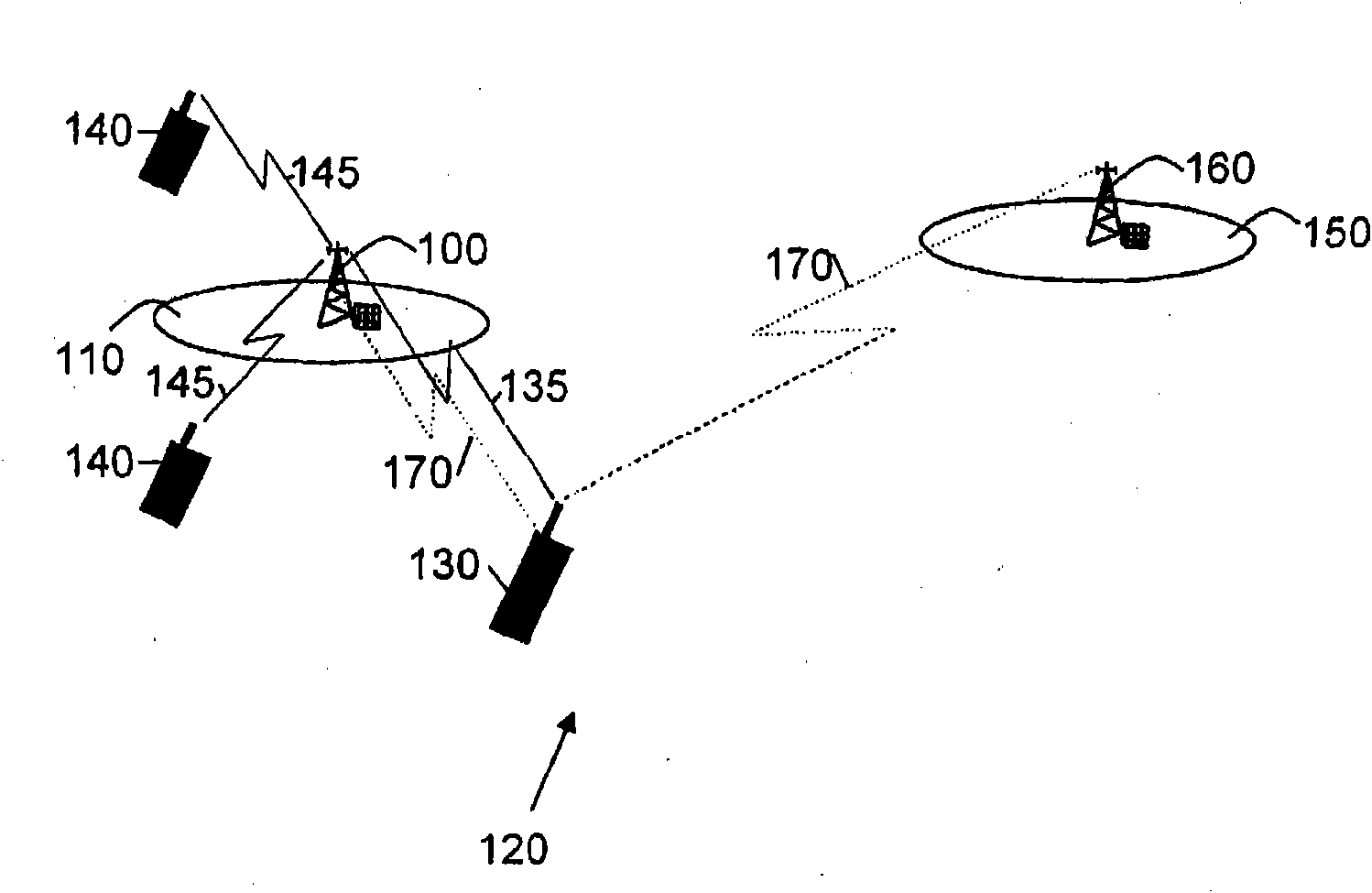Improving inter-cell interference co-ordination
A technology of total interference and adjacent cells, applied in transmission monitoring, transmission control/equalization, electrical components, etc., can solve problems such as degraded algorithm performance, poor interference prediction, etc., to improve system capacity and coverage, good coverage, and improved Effects of Frequency Selective Scheduling
- Summary
- Abstract
- Description
- Claims
- Application Information
AI Technical Summary
Problems solved by technology
Method used
Image
Examples
Embodiment Construction
[0019] The present invention is defined as the method and apparatus which can be used in practice as described in the following various embodiments.
[0020] figure 1 Shown is a base station 100 serving a cell 110 comprised in a radio access network 120, such as E-UTRA and Worldwide Interoperability for Microwave Access (WiMAX), UTRA, WLAN, WCDMA, GSM / GPRS. The first user equipment 130 is connected to the base station 100, which enables the first user equipment 130 to communicate with the base station 100 using resources 135 (eg, resource blocks, frequency bands, time slots and / or spreading codes). A resource block is a frequency channel limited in time. The first user equipment 130 is connected to the cell 110 , so the cell 110 is referred to as a connected cell 110 . The base station 100 may also be connected to a second user equipment 140 with which the base station 100 may use resources 145 to communicate. The first user equipment 130 and the second user equipment 140...
PUM
 Login to View More
Login to View More Abstract
Description
Claims
Application Information
 Login to View More
Login to View More - R&D Engineer
- R&D Manager
- IP Professional
- Industry Leading Data Capabilities
- Powerful AI technology
- Patent DNA Extraction
Browse by: Latest US Patents, China's latest patents, Technical Efficacy Thesaurus, Application Domain, Technology Topic, Popular Technical Reports.
© 2024 PatSnap. All rights reserved.Legal|Privacy policy|Modern Slavery Act Transparency Statement|Sitemap|About US| Contact US: help@patsnap.com










